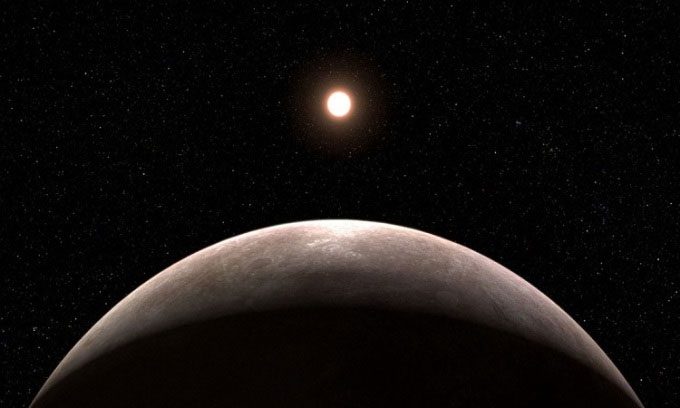Confirmed Exoplanet Near Earth Detected by James Webb Space Telescope Observations.
The exoplanet named LHS 475 b is located outside our Solar System and is nearly the same size as Earth. This rocky planet is 41 light-years away from Earth in the constellation Octans. Previous data from NASA’s Transiting Exoplanet Survey Satellite (TESS) suggested the planet might exist.

Simulation of the rocky planet LHS 475 b, with Earth-like dimensions. (Image: NASA)
A research team led by astronomer Kevin Stevenson and postdoctoral researcher Jacob Lustig-Yaeger at the Johns Hopkins University Applied Physics Laboratory in Laurel, Maryland, observed the target using the Webb telescope. They monitored the starlight dimming as the planet passed in front of its host star. According to the research team, Webb’s data has confirmed the existence of the exoplanet LHS 475 b.
The discovery of LHS 475 b was announced on January 11 at the 24th meeting of the American Astronomical Society in Seattle. Stevenson noted that this is also an impressive small rocky planet for the observatory.
Webb is the only telescope capable of determining the atmospheric characteristics of Earth-sized exoplanets. The team used Webb to analyze the planet across multiple wavelengths of light to check for an atmosphere. Currently, they have not drawn any definitive conclusions, but the telescope’s sensitivity has detected a range of molecules. Lustig-Yaeger mentioned that LHS 475 b is unlikely to have a thick atmosphere primarily composed of methane, similar to Saturn’s moon Titan.
Astronomers will have another opportunity to observe the planet again this summer and conduct analysis on the potential existence of an atmosphere. Webb’s findings also reveal that the planet is several hundred degrees warmer than Earth. If the research team finds clouds on LHS 475 b, it could resemble Venus more closely. Venus is considered a hotter twin of Earth, with an atmosphere composed mainly of carbon dioxide.
The planet completes an orbit around its host star, a red dwarf, in just two days. Due to the star having only half the temperature of the Sun, the planet may still retain an atmosphere despite its proximity to the host star.
“Webb provides us with new insights into Earth-like worlds beyond our Solar System, and the mission has only just begun,” shared Mark Clampin, director of astrophysics at NASA’s headquarters.





















































